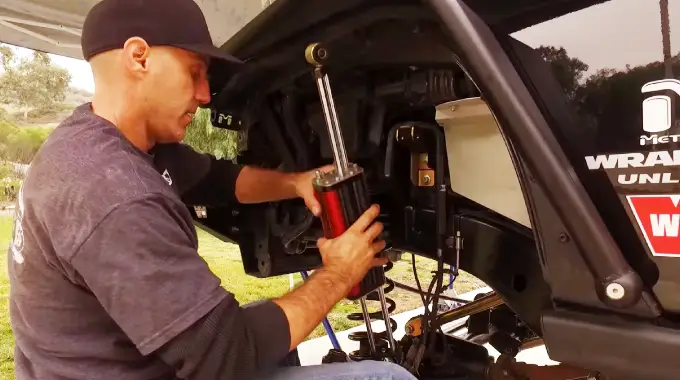Last Updated on April 5, 2023
Owning a Jeep Wrangler is an adventure in itself, but with the right suspension lift, you can make your experience even more memorable. From boosted performance and off-roading capabilities to adding edge to its look, these lifts are here for all of your adventurous needs.
Installing a suspension lift may seem like the way to take your ride up a notch, but be warned. It could also cause some serious problems with how you shift. It can change the way your shifter works. Shaking and stuck gear shifts are just two of the unexpected consequences.
Many factors are at play, from drive line angle adjustments to clutch pedal impacts and compatibility with other body lift kits. Not only that, but it can even affect your entire suspension alignment if not installed correctly.
Let’s dive into the hidden world of suspension lifts and how they can influence your Jeep Wrangler’s shifting capabilities.
How Does a Suspension Lift On Wrangler Change Shifter:
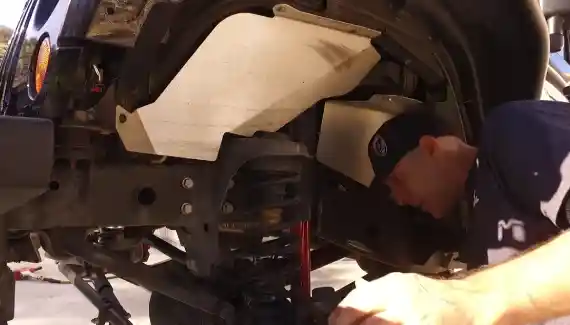
When taking your Wrangler off-road, consider a suspension lift upgrade that can dramatically improve its capabilities. Still, be aware of how the shift will change.
While you may experience an increase in performance and agility on terrain, it could lead to rougher rides over highways or city streets. Suspension lifts change and affects shifting like these:
Change In Driveline Angle
When a Wrangler is lifted, its driveline angle changes due to its increased ride height. This can cause it to feel stiffer or more difficult to shift when compared to vehicles without lifts. Too steep or too shallow of driveline angles can also cause vibration and excessive wear on U-joints and CV axles.
To combat this issue, vehicle owners should strive for a balance between driveline angle and ride height when lifting their Wranglers.
The Absence of Shifter Extension
Some suspension lift kits do not come with a shifter extension as part of the package. As such, it is essential for vehicle owners who plan on lifting their Wranglers to consider purchasing an aftermarket shifter extension.
Since it can help prevent extra strain on the transmission itself during shifts.
Compatibility with Transfer Case Drop Kits
Transfer case drop kits are sometimes necessary to correct driveline angles when performing a Wrangler’s suspension lift kit. But, these drop kits can make it difficult for lower gears to be reached or shifted properly due to their lower position relative to the floorboard than before the installation.
To alleviate this issue, some Wrangler owners may need to purchase additional parts, such as raised shift knobs or longer shift arms and linkages. So their vehicle is better able to shift into desired gears more easily.
Suspension Geometry Changes
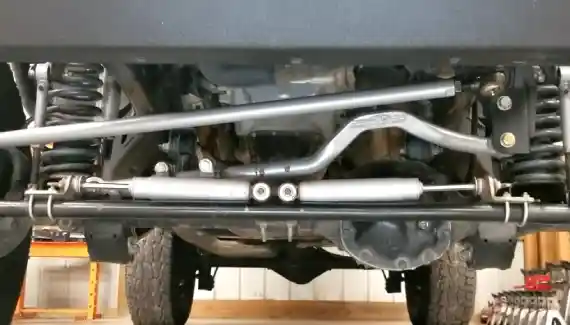
The suspension lift also changes your Wrangler’s suspension geometry, which affects the location of your shifter inside your cabin relative to other components. Lift kits should be selected carefully as some lifts may position your shifter too far away from you, making it hard to reach highway speeds and beyond.
Impact on Clutch Pedal
The last factor that affects shifting in your lifted Wrangler is how it impacts the clutch pedal position and feel. If you have installed a lift kit with longer control arms than stock, you may have trouble reaching the clutch pedal all the way, resulting in missed shifts.
Thereof altogether causing further problems down the road if left unaddressed.
Many aftermarket parts, such as adjustable pedals, are available to fix this issue. The system lets you adjust them up or down depending on where they need to be placed. So they’re easier for you to reach while driving comfortably and safely.
Wrong Adjustments to Shifter Alignment
If improperly adjusted, your shift linkage may not align properly with both your transmission and shifter housing. This can cause significant discomfort during shifts and even increase wear on those components over time due to excessive stress.
Before doing anything heavy with your Jeep, align the shift linkage properly with both parts before installing any suspension upgrades.
Impact on Bushings and Bearings
Suspension lifts are known for causing increased wear and tear on bushings and bearings due to vibration caused by extra tension placed upon them when lifting your Wrangler’s frame higher off the ground than normal. Therefore, you must inspect these components regularly for signs of wear or damage.
So they can be replaced if needed before they cause any further degradation in drivetrain performance due to broken parts within their assemblies.
Compatibility With Body Lift Kits
Some Wrangler owners choose to install both suspension and body lifts as part of their vehicle’s modification setup for increased ground clearance capabilities both above and below its floorboards, respectively. However, special considerations must be taken into account when doing so.
Since traditional shift linkages were not designed nor built to handle double-lifted vehicles, like those with both suspension and a body lift kit installed simultaneously. It is advisable for potential buyers to consider more robust aftermarket solutions before building a lift of this type.
Top Signs That Your Wrangler’s Shifter is Affected by a Suspension Lift
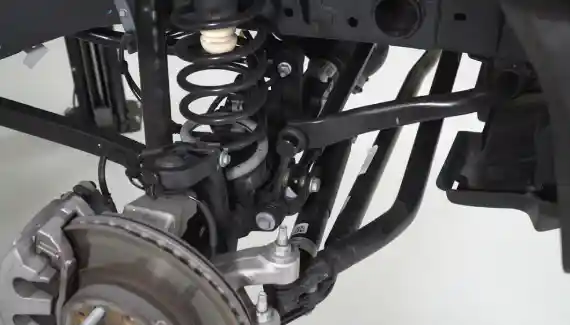
If you’ve decided to give your Wrangler a lift, the suspension changes can come with their own set of complex transmission issues. Those inexperienced in both lifts and transmissions may find it difficult to pinpoint why shifting is off-kilter.
But if equipped with the right knowledge, these problems are solvable. Symptoms of a troubled shifter include:
Difficulty Shifting Gears
When you try to shift, the shift lever may move more than usual before the gear engages, or it may not go into gear at all. Additionally, you may feel a slight grinding sound when trying to shift gears in either direction.
Vibrations While Shifting
If you experience vibrations while shifting, this could indicate a misalignment between the transmission and drivetrain components, making it difficult for them to sync up properly.
Shifter Hits The Body
When shifting from park to reverse or vice versa, the shifter may hit against the body of your Wrangler instead of actually going into gear. You could also experience this while shifting between other gears, indicating your suspension lift has misaligned your transmission.
Gears Not Engaging
You may find that when turning on your engine and trying to shift into drive or reverse, nothing happens, no matter how many times you try it. It could prevent your transmission from engaging with any of its gears and needs immediate attention from a mechanic.
Shifter Feels Loose
If you notice your shifter feels looser than normal when shifting gears, you may have a suspension lift issue. The transmission linkage could be slipping and needs to be looked at sooner rather than later for optimal performance levels and safety.
Clutch Feels Different

Recently lifted Wranglers might have different clutch responses than before. This usually manifests itself in either feeling heavier or lighter than before because of its new positioning relative to other components within the driveline system after installation of the lift kit.
Noise From The Shifter Area
Watch out for strange noises around where you normally move the shifter (such as clunks, clicks, or whines). Then this could also be an alignment issue caused by a suspension lift and should be checked out by an experienced mechanic.
Difficulty Finding Neutral
Having trouble finding neutral is another classic symptom of shifter problems with suspension lifts. Due to incorrect alignments, sometimes neutral won’t appear on either side (Park/Reverse), so professional help should be sought if this is a persistent problem.
Suspension Lifts and the Shifter Shake: How to Keep Your Wrangler Running Smoothly
If you want to get the most out of your Jeep Wrangler, it’s time for a suspension lift and some fine-tuning of your driveshaft setup. With these adjustments in place, you can take on any challenge while keeping the ride smooth and shake-free.
Install a Transfer Case Drop Kit
Using the right transfer case drop kit for your Wrangler is essential for reducing vibration and improving driveline angles. This will help reduce the likelihood of shifter shake, allowing you to drive confidently.
Use the Right Size Tires
Larger tires are more prone to experiencing more vibrations than narrower ones, which can lead to shifter shake if not installed properly. Make sure you have the right size tires for your Jeep’s lift kit, as this will help prevent nasty vibration issues down the line.
Upgrade Your Driveshafts
Worn-out or improperly balanced driveshafts can affect shifting performance, causing vibrations during acceleration or deceleration. Consider upgrading yours if they’re over five years old or showing signs of wear and tear.
Install a Slip Yoke Eliminator (SYE)
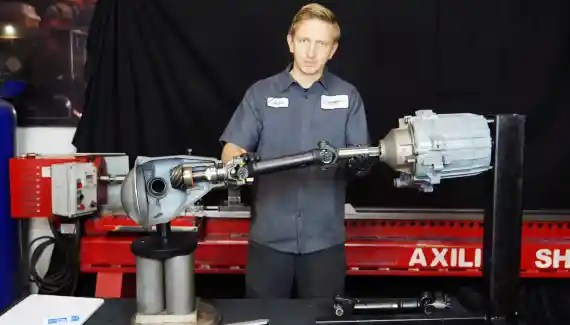
This device helps stabilize your driveshafts by reducing driveline movement and transmission input shaft angle change during wheel articulation. Basically, it stops vibrations from getting into the vehicle’s body and causes the shifter to shake.
Install A Track Bar
Installing a track bar, your Jeep’s axle will be centered beneath its body, and you’ll have less suspension roll during cornering and steering. If you’re accelerating or braking quickly while turning corners, these things can cause vibrations that can get into your cabin and shake your shifter.
Check For Clearance Issues
If you’ve just installed a suspension lift, then there may be some added parts rubbing against each other like brake lines clashing with sway bars, etc. Just check for any clearance issues between different parts, so potential problems don’t become bigger problems.
When You Raise Your Jeep Wrangler’s Suspension, Does This Raise the Differential?
When raising a Jeep Wrangler’s suspension, it is important to note that the differential itself is not raised. However, the ground clearance of the differential is increased. As a result of the suspension lift, the differential remains in its original position relative to the frame and axle but is farther away from the ground.
This increase in ground clearance improves vehicle performance when off-roading or traveling through terrain with large rocks, ruts, and other obstacles. But sometimes, this can also lead to some difficulty with shifter alignment, as the differential angle is now steeper due to the suspension lift.
Also, by increasing ground clearance, more air circulates around the differential, which can help prevent it from becoming excessively hot during long drives. With increased ground clearance provided by a suspension lift, Jeep Wrangler JK owners can enjoy an enhanced performance on off-road trails.
What are the Chances that the Shifter of a Jeep Wrangler got Stuck After Suspension Lifting?

For Jeep Wrangler owners looking to lift their vehicles, a common danger is the potential for the shifter to become stuck due to misalignment of the shifting linkage. Usually, this happens when suspension components are not installed or adjusted correctly.
If the lift kit was installed correctly, this issue could be prevented by regularly checking your shift linkage and ensuring it is correctly adjusted.
Other causes can lead to a Jeep Wrangler shifter becoming stuck after suspension listings. For example, an improperly operating clutch pedal, bent adjustable control arms, worn bushings and mounts, as well as a damaged shift cable ends or bell cranks.
To avoid potential issues like these, it is highly recommended that a professional install your Jeep lift kit or have them check your alignment and adjust your shift linkage if necessary.
Does Your Wrangler Need a New Shifter After a Suspension Lift?
Getting a new shifter after installing a suspension lift is not always necessary. The adjustment of the shifter linkage is often enough to prevent any longer-term problems or issues with shifting. As a result, replacing the shifter is better if it’s already broken or bent beyond repair.
You might need a new shifter if you have trouble shifting, an unusually hard shift, clunking or grinding noises when engaging gears, and erratic transmission behavior, as we mentioned above.
When selecting a replacement shifter for your Wrangler, ensure that it meets all OEM (original equipment manufacturer) specifications to guarantee compatibility with your vehicle.
Aside from that, purchase the proper installation kit required by your Jeep model. While some kits are universal and will fit any Jeep Wrangler, others are model-specific and require certain components depending on your year and trim level.
Elevate Your Jeep Experience with a Suspension & Shifting Upgrade
It is clear that a suspension lift on a Jeep Wrangler can significantly impact the shifting mechanism and performance. From modified drive line angles and geometries to increased clutch pedal pressure. These essential factors should not be overlooked when contemplating a vehicle alteration as significant as a lift.
To ensure maximum performance, maintain the appearance and reduce long-term damage to your vehicle’s inner workings, it is wise to consult with a professional. An experienced mechanic can help you with every step of successful maintenance, which is crucial for keeping your car in top condition.
